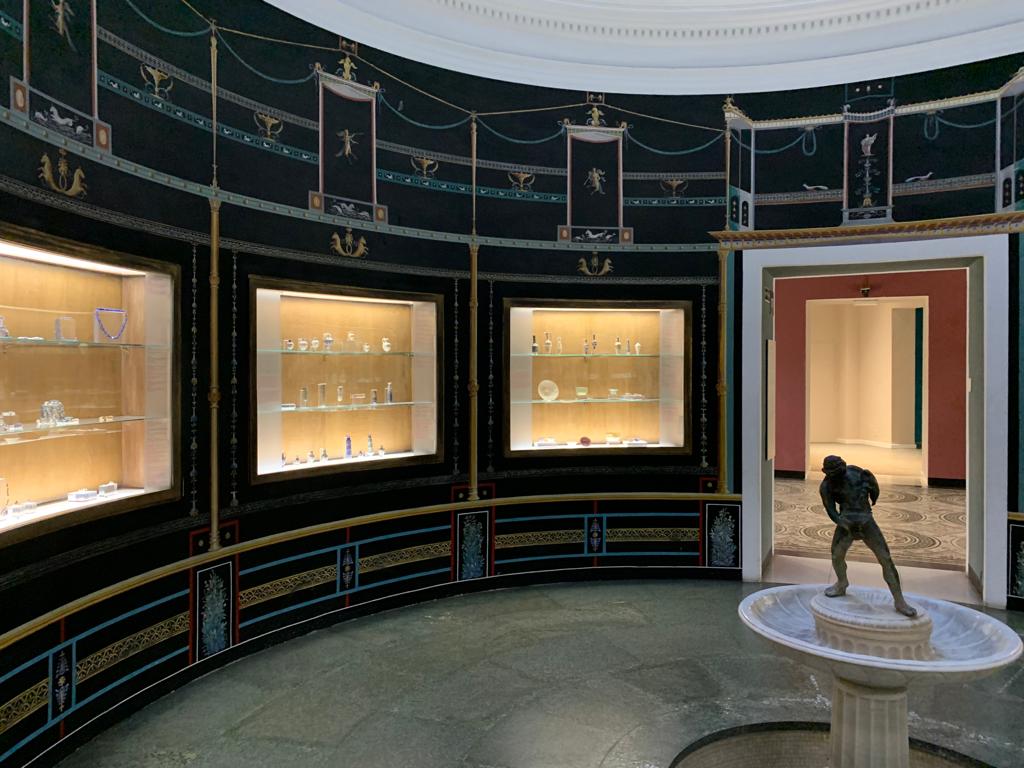Museu d’Arqueologia de Catalunya (Archaeology Museum of Catalonia), Barcelona
The Archaeology Museum of Catalonia combines new technologies with its rich collection of archaeological finds from around the region.



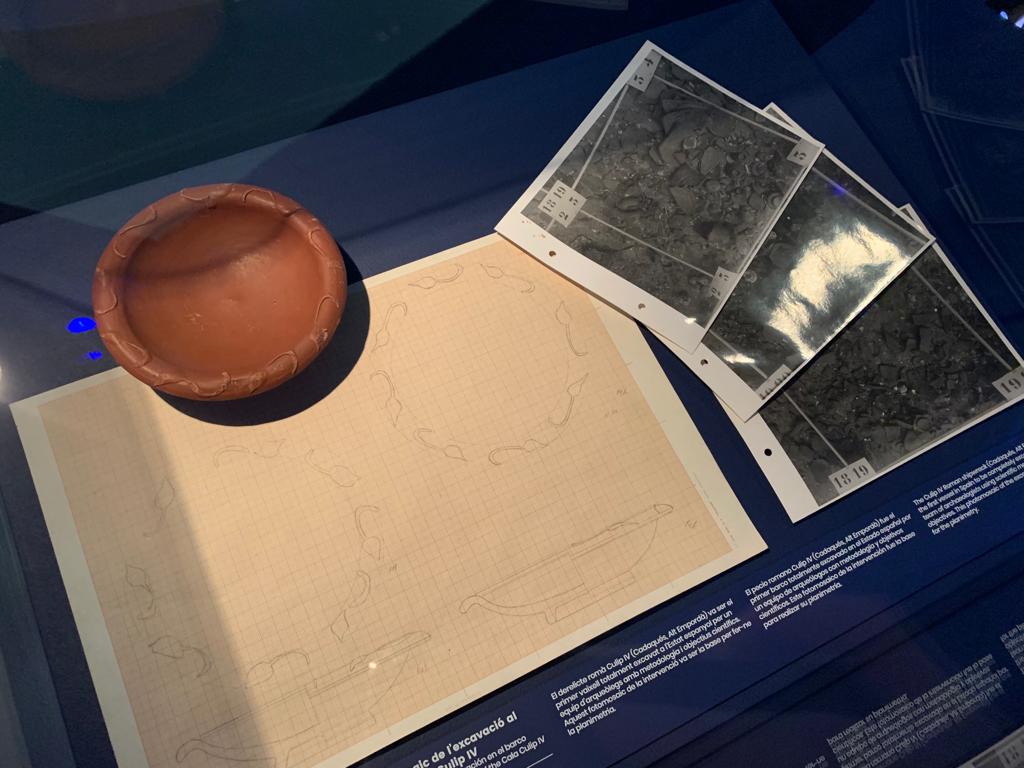
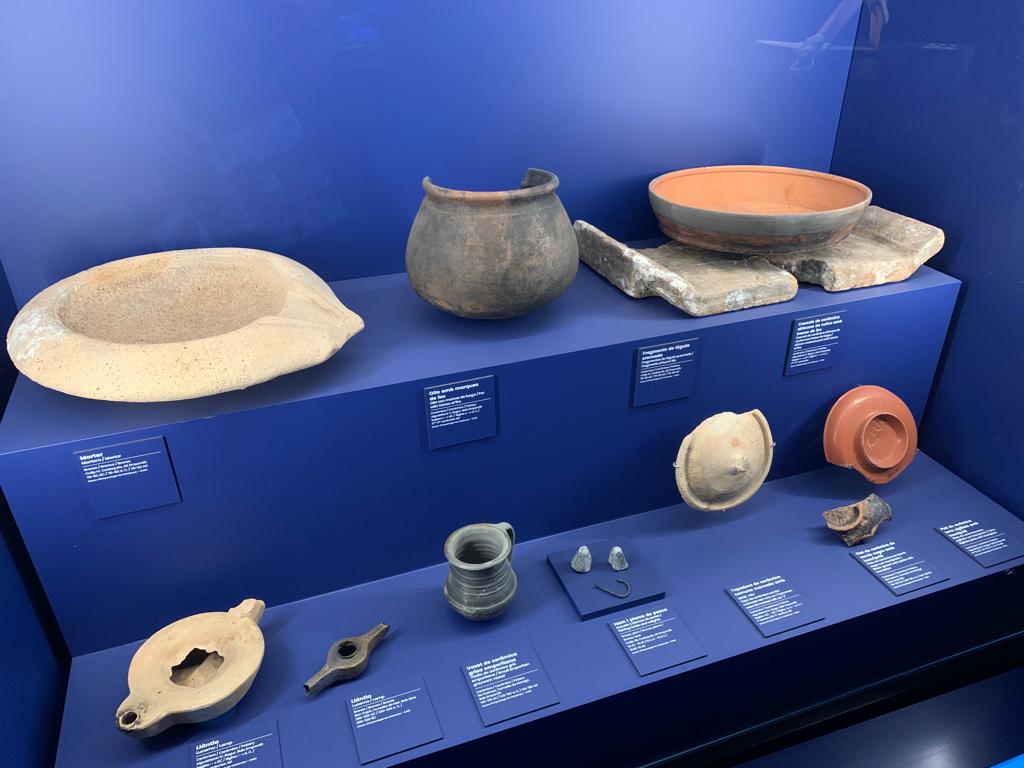

A Final Outing To Montjuïc
Today’s post is a final opportunity to learn more about the cultural institutions of Montjuïc. On the Salterton Arts Review at least: you can learn about Montjuïc elsewhere or even go there yourself! But after this we will move onto a couple of institutions in central Barcelona before we bid Catalonia farewell. As institutions go, the Archaeology Museum of Catalonia encapsulates a lot of what makes Montjuïc, Barcelona, and Catalonia special, and so is a good case study for us to explore.
We learned in our deep dive into Montjuïc how this hill near Barcelona was extensively developed for the 1929 International Exposition. Infrastructure in the form of roads, electricity, and public transport supported the Exposition and the crowds of people arriving to see it. Numerous pavilions and other buildings popped up to show off the latest in art, technology, culture and architecture. The intent was for these buildings to be temporary, but some of them stuck around. Not always the right ones: the German Pavilion was quickly dismantled, later became an icon of modernism, and was reconstructed in the 1980s. But that’s a story for another day.
The building housing the Archaeology Museum of Catalonia was, back in 1929, the Palace of Graphic Arts. Graphic as in drawings and prints rather than graphic as in explicit. In style it’s like a more muted Palau Nacional (now the Museu Nacional d’Art de Catalunya): modern-ish but with classical elements. Definitely not a work of Catalan Modernism. It needed a bit of refitting after the Exposition, but officially became the Archaeology Museum in 1932 and opened its doors in 1935.
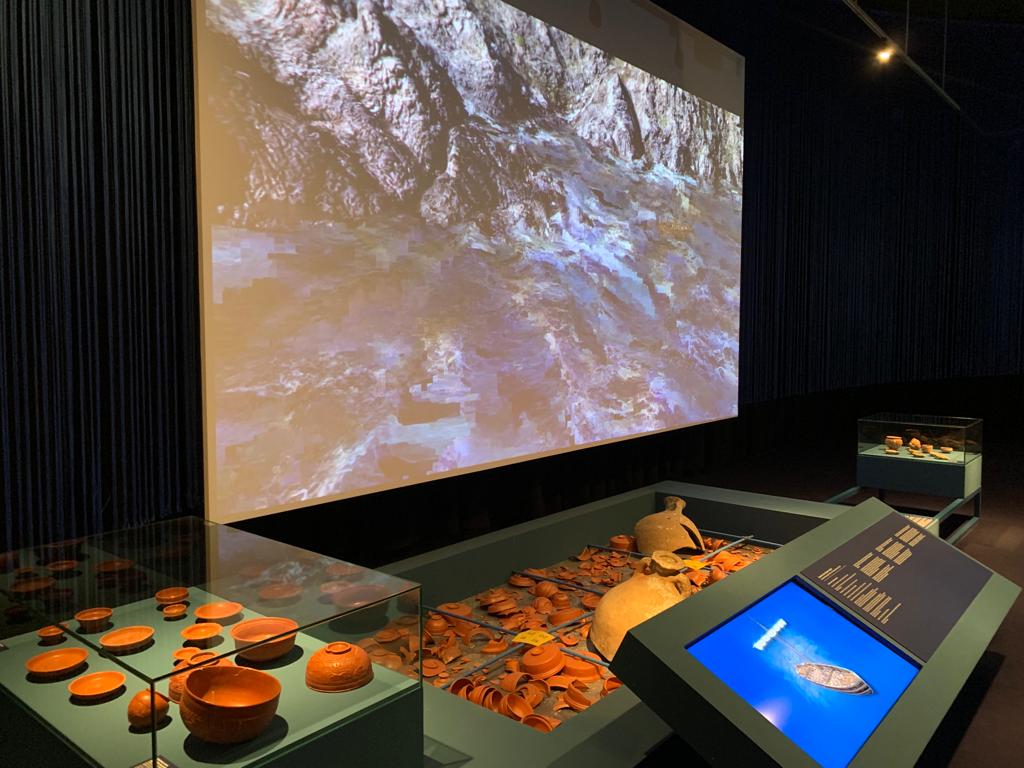
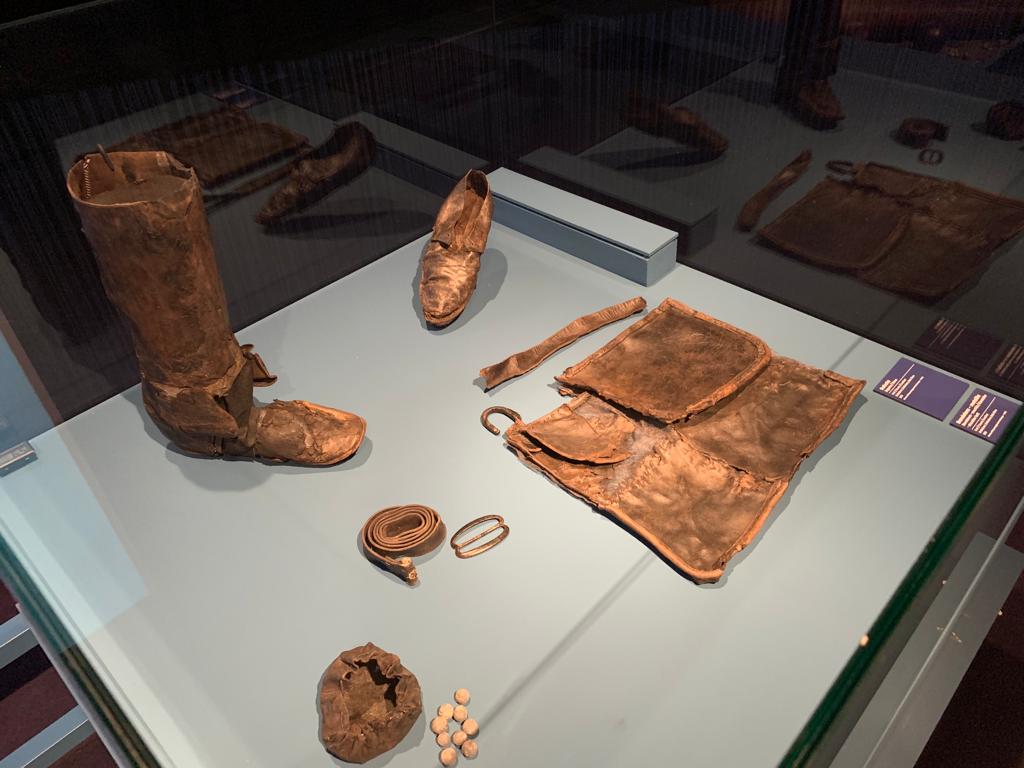

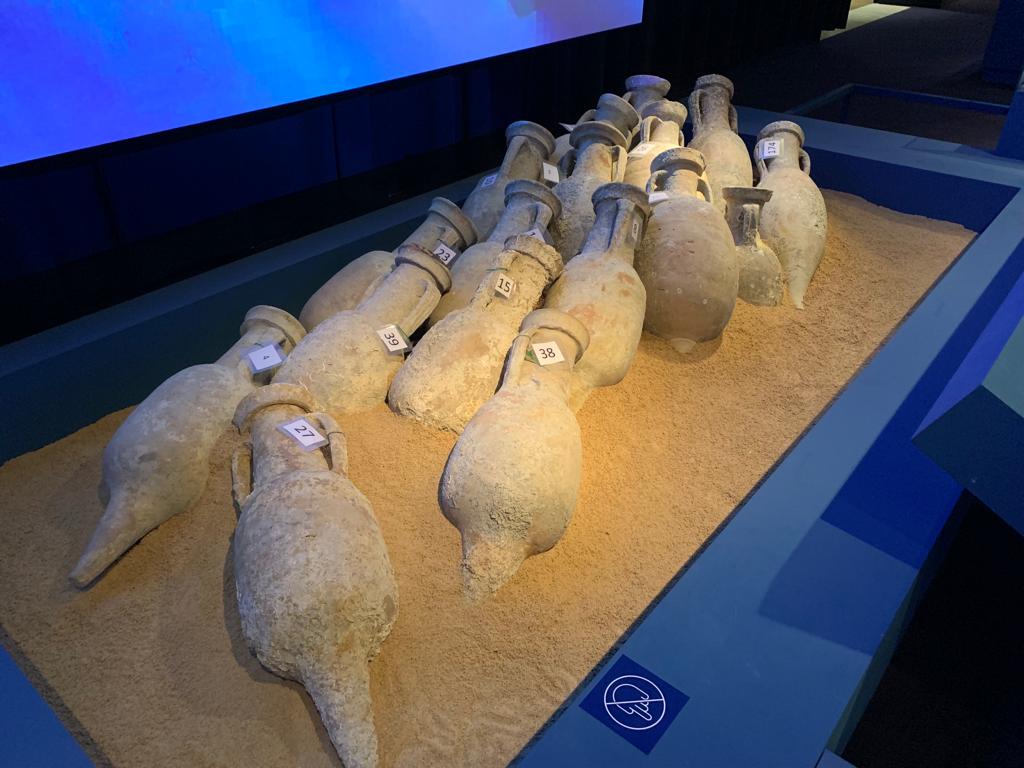
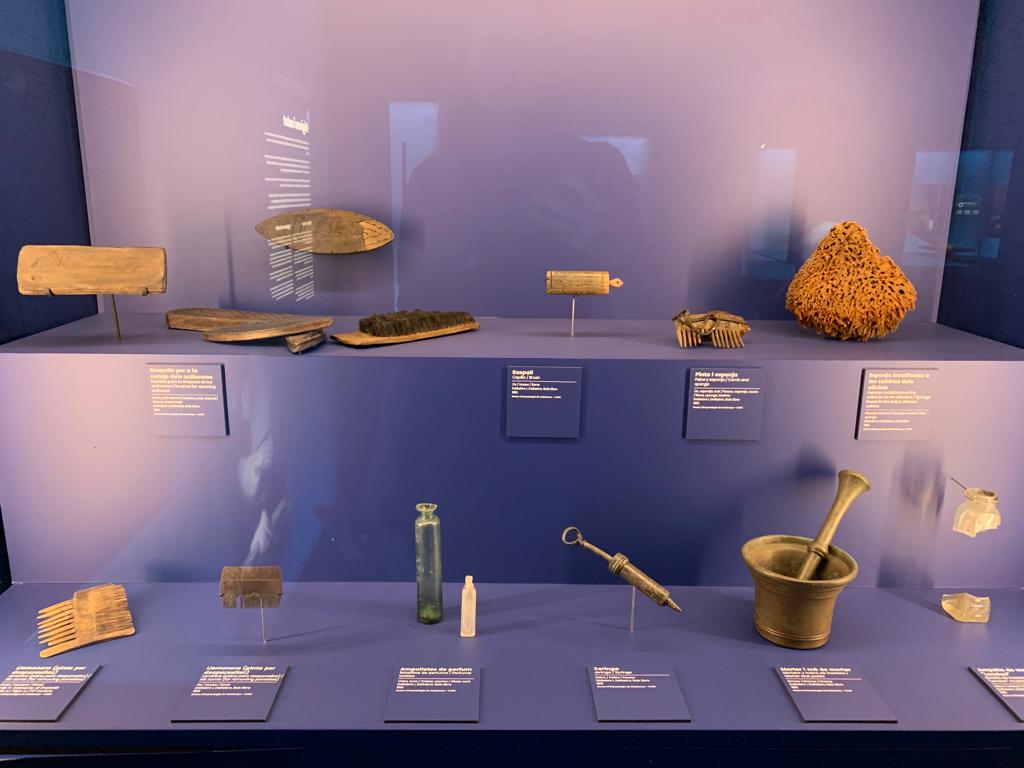

The Archaeology Museum of Catalonia
The Archaeology Museum of Catalonia (also known as MAC) is actually a much bigger institution than this site suggests. As well as this museum there is another in Girona, a couple of archaeological sites, and an institute of underwater archaeology. We will only really be discussing the Barcelona museum today.
The roots of the collection of the Archaeology Museum of Catalonia arguably go back as far as 1840. That’s when Prosper de Bofarull started a lapidary and antiquities museum in the abandoned convent of Sant Joan de Jerusalem. This collection later became part of the Provincial Museum of Antiquities of Barcelona, founded in 1879. In 1915 a Museum of Art and Archaeology of Barcelona also came into being. In the late 19th and early 20th centuries Catalonia was undergoing a cultural renaissance that saw great focus placed on the preservation of history, culture and language. That so many museums were popping up at this time should be seen in this context, as well as that of the professionalisation of archaeology.
So in 1932 various collections moved into new premises in Montjuïc. The new museum was also entrusted with an archaeological site with a small museum at Empúries. In 1936, it became the Archaeology Museum of Catalonia (it had previously included only Barcelona). This was the same year the Spanish Civil War broke out. The museum was under the direction of the Catalonian regional government, moving under a provincial council after the war in 1939 when the autonomous government was suppressed. The museum continued to thrive regardless. And in the early 1990s underwent a reorganisation which saw it take on its current form.
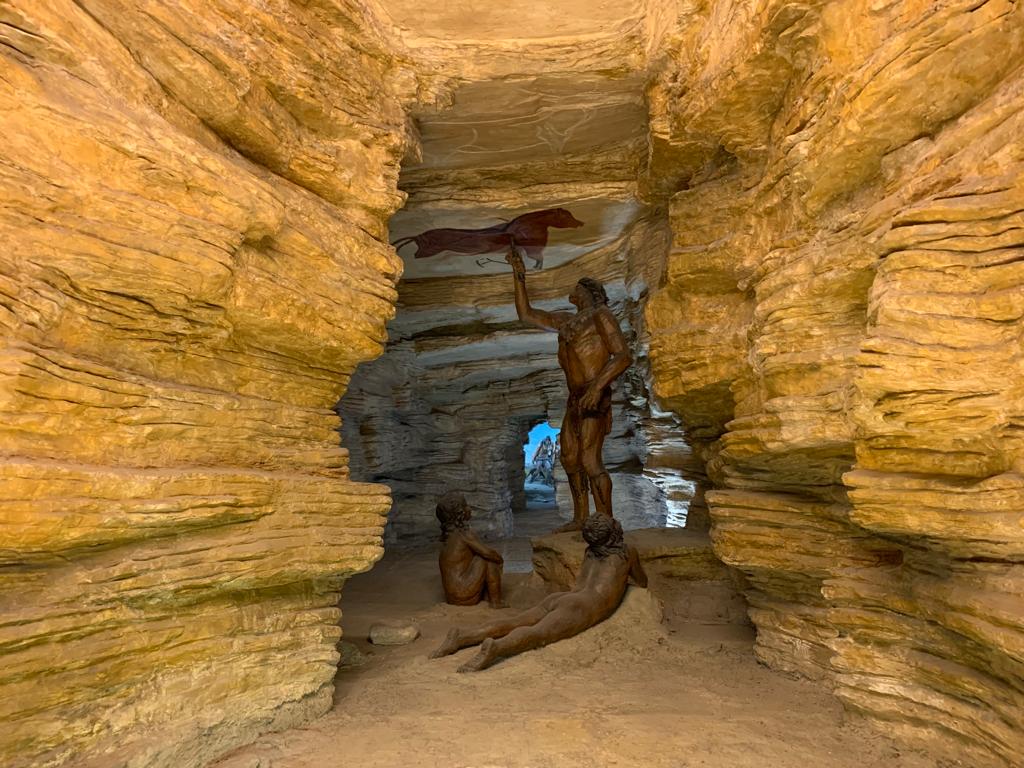
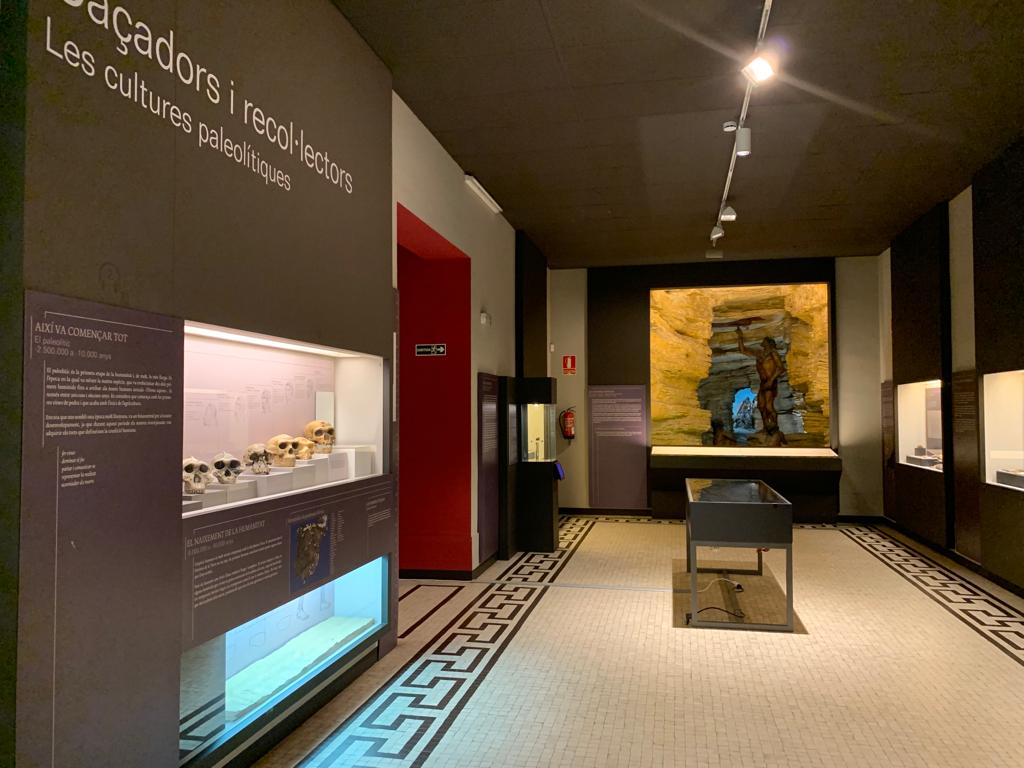
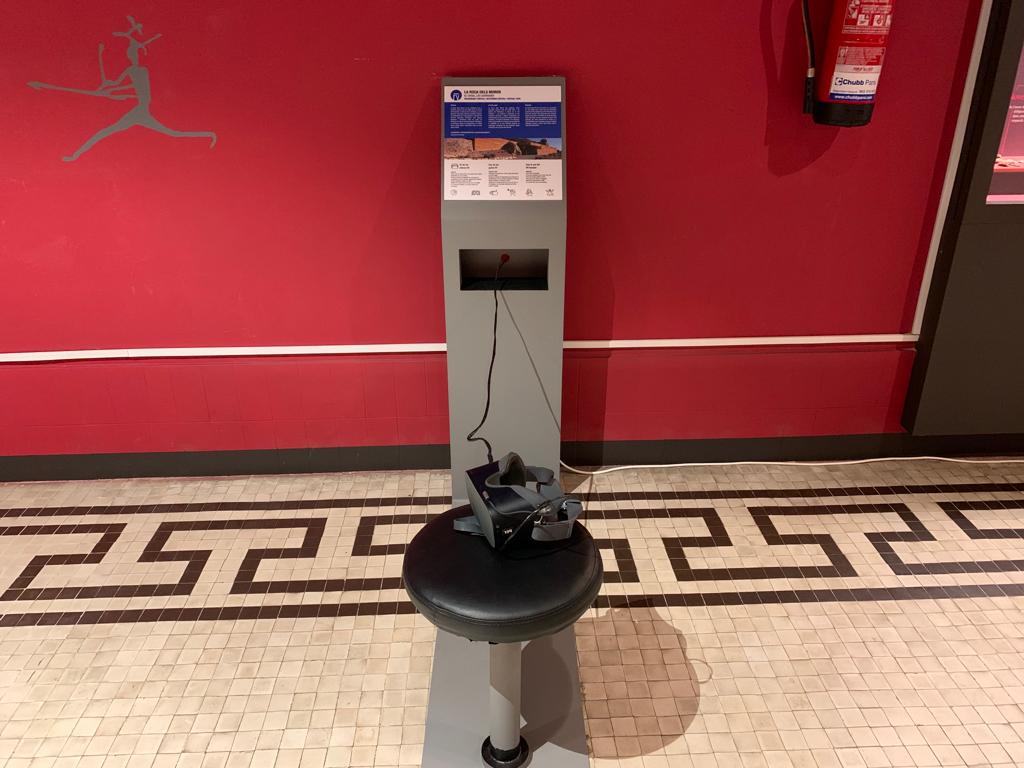

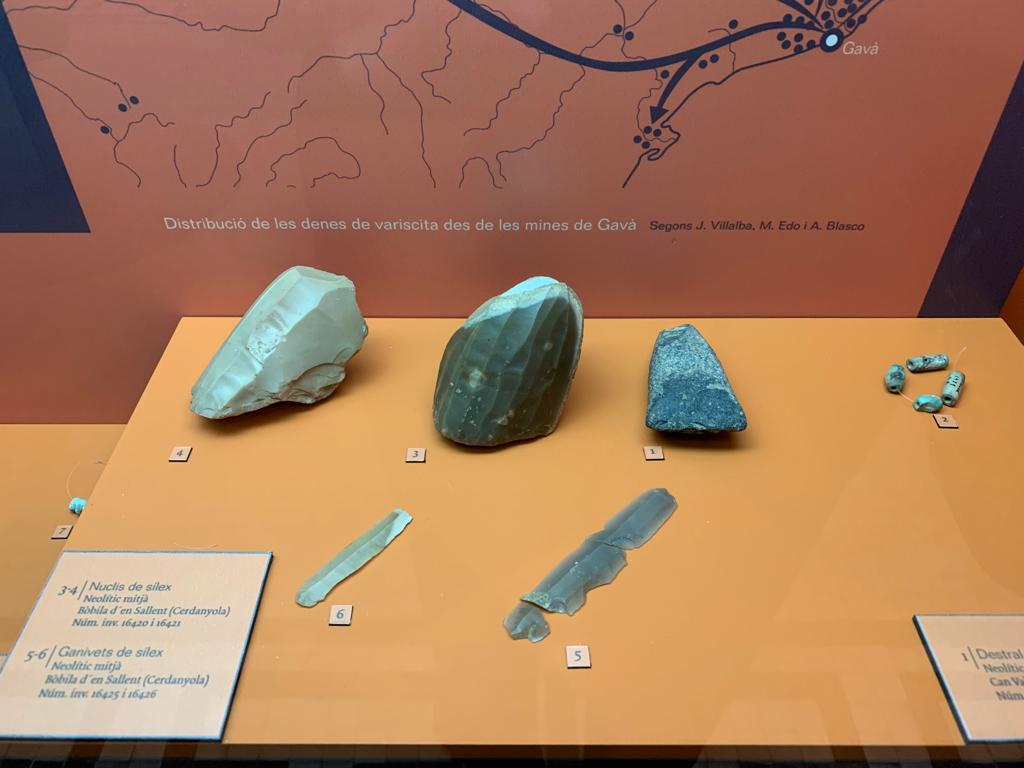

Inside the Archaeology Museum of Catalonia
Let’s get inside the museum then, shall we? I rather enjoyed the Archaeology Museum of Catalonia. It has a good collection, it’s rather endearingly traditional, but does have a few modern flourishes that make it interesting.
One of the first things I noticed about the museum is that it’s rather hampered by its layout. It has a big central hall, with galleries that sort of skirt around and through it. The central hall is where temporary exhibitions take place: I saw one on underwater archaeology. But this layout means you essentially have a choice between seeing the temporary exhibition then going back to the start and cutting back through the exhibition halfway through, or starting at the start, ignoring the exhibition as you walk through it, then circling back to it at the end. Not really a hardship, more an oddity related to reusing an exhibition building.
Aside from this, the museum adopts a fairly standard chronological layout. It starts with prehistory. Then there’s proto-history. Romans and Phoenicians come next. And finally there are Visigoths. Although I’m fairly sure the Visigoth displays were closed when I visited (or I failed to understand how to get to them). The museum therefore tells the story of movements of people over millennia, and how each of them have left their mark.
It’s also a museum about how archaeology helps us to understand the past. The temporary exhibition I saw was particularly good for this. It looks at shipwrecks and underwater archaeology: how historic accidents and careful study and preservation increase our knowledge of daily life, trade and commerce. But throughout we see how excavation, preservation, interpretation and recreation fill gaps in the historic record.



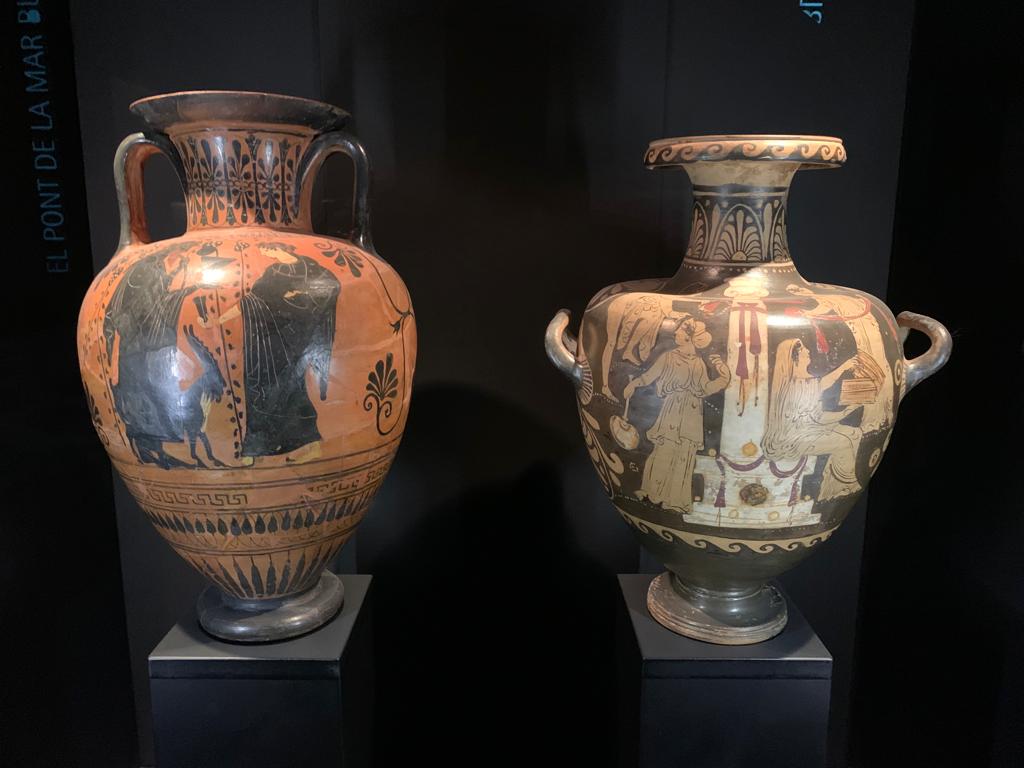

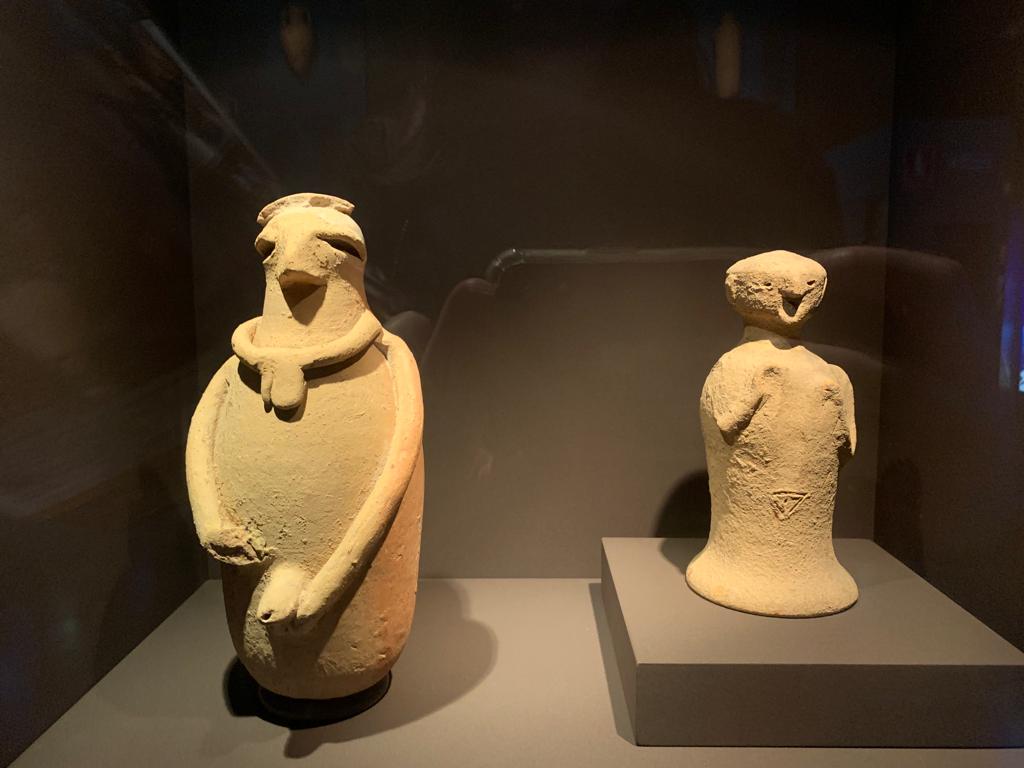
A Few Museum Highlights
There were many things I enjoyed about the Archaeology Museum of Catalonia. But as I said earlier, this is a fairly standard archaeological museum. Start with some flints, move into pottery: if you see as many archaeological museums as I do it’s par for the course. So the things I enjoyed most about this museum in particular were the surprises along the way.
Firstly, it was a surprise, but a welcome one, to see VR headsets. I love a bit of virtual reality and so made a beeline for the first of these. There were about half a dozen throughout the museum: each of them transports the visitor to an archaeological site relevant to the period of time. So in the prehistoric section of the museum, you can see cave paintings. Or a remote and hard to reach cave burial site. It’s a great use case for VR, allowing visitors to explore places they wouldn’t otherwise go, complete with additional information. I tried out all of them and it was by far my favourite thing about the museum.
The other thing I enjoyed about the Archaeology Museum of Catalonia goes into the category of ‘illicit thrills for museum geeks’. The museum has a couple of Roman mosaics imbedded into floors, with no barriers keeping visitors away. So, taking my lead from a staff member, I cautiously walked on them! I love that sort of immediate connection to the past: touching something that people touched millennia ago. A little thrill for the otherwise rule-abiding museum-goer.
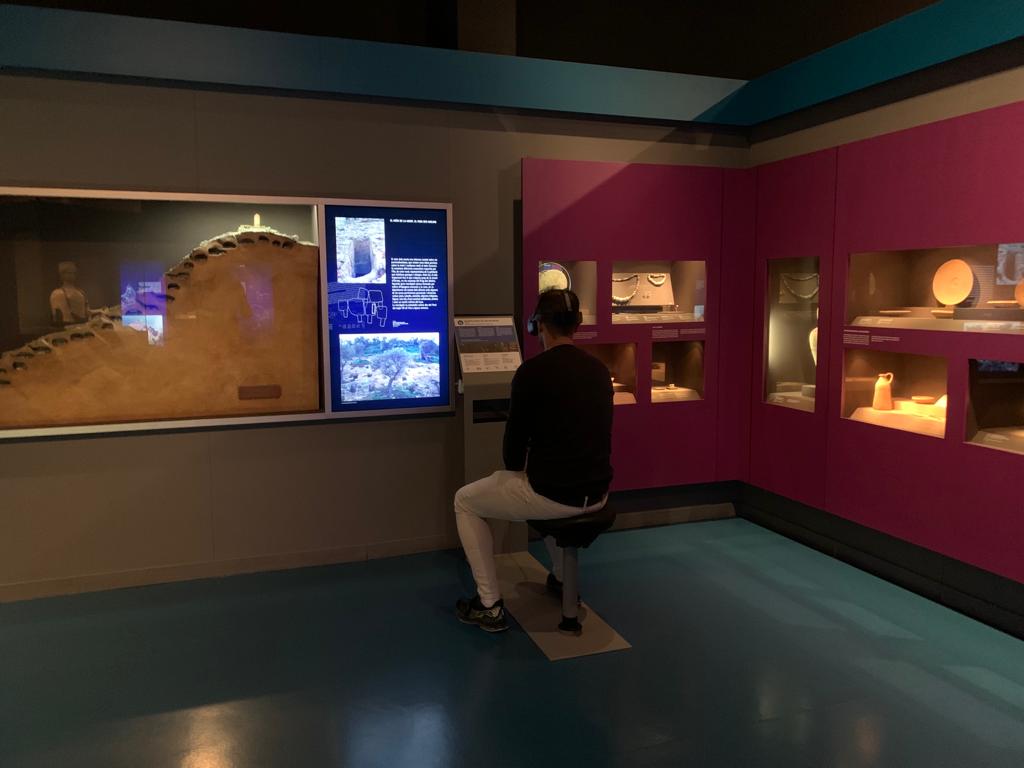
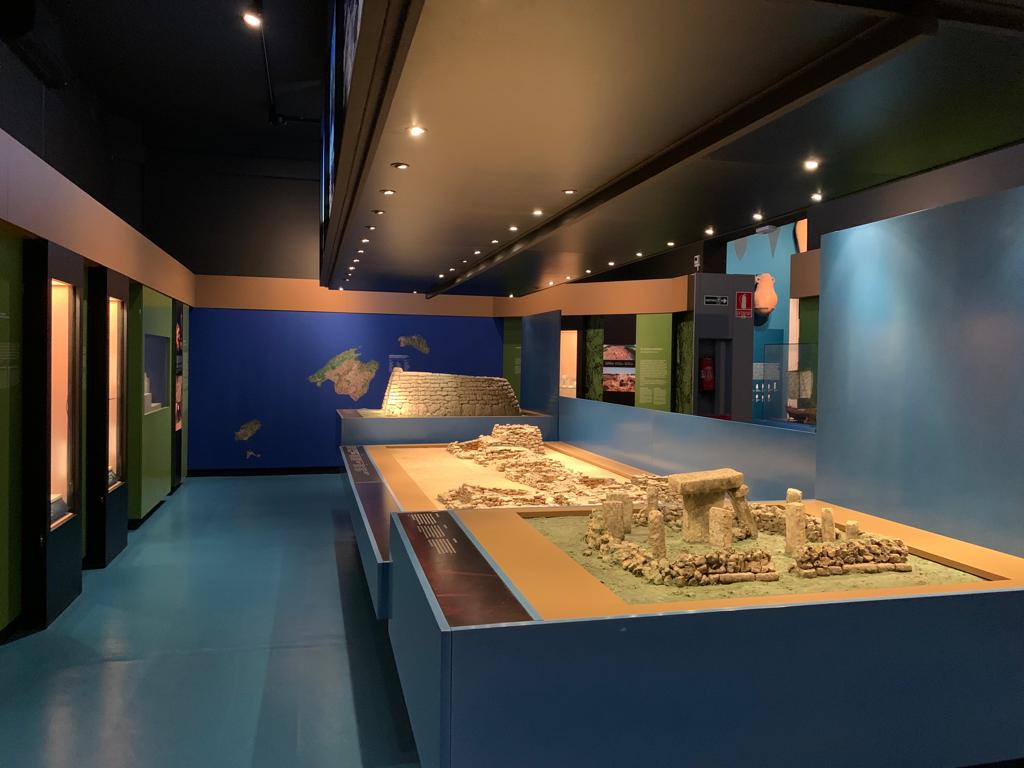

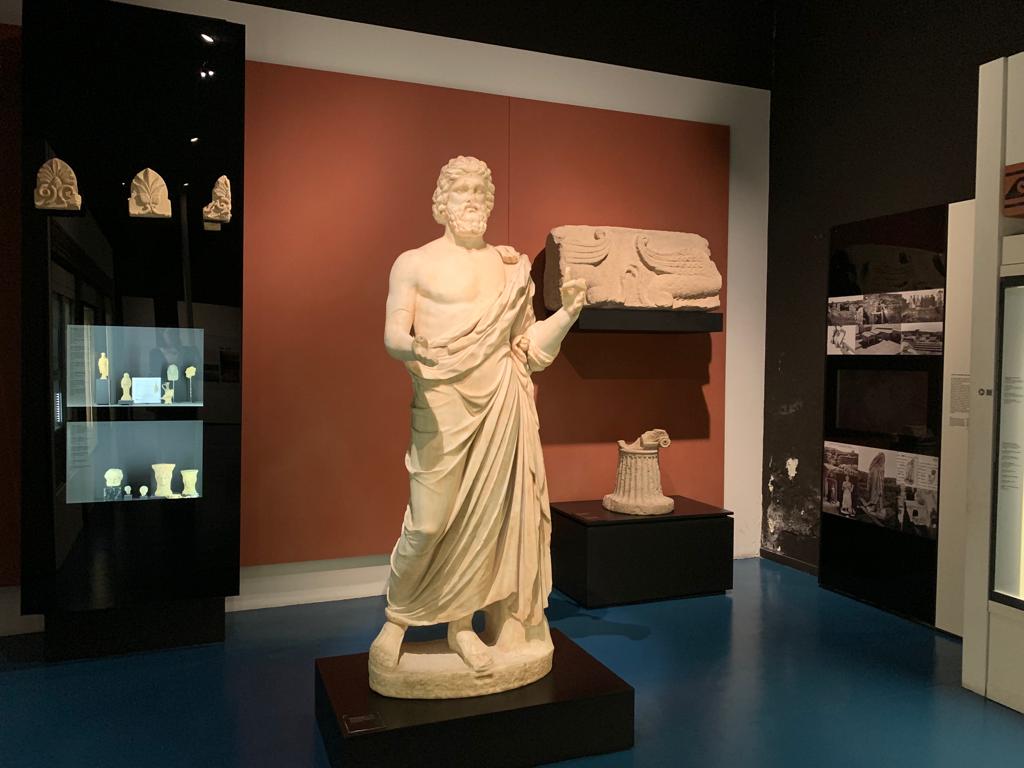
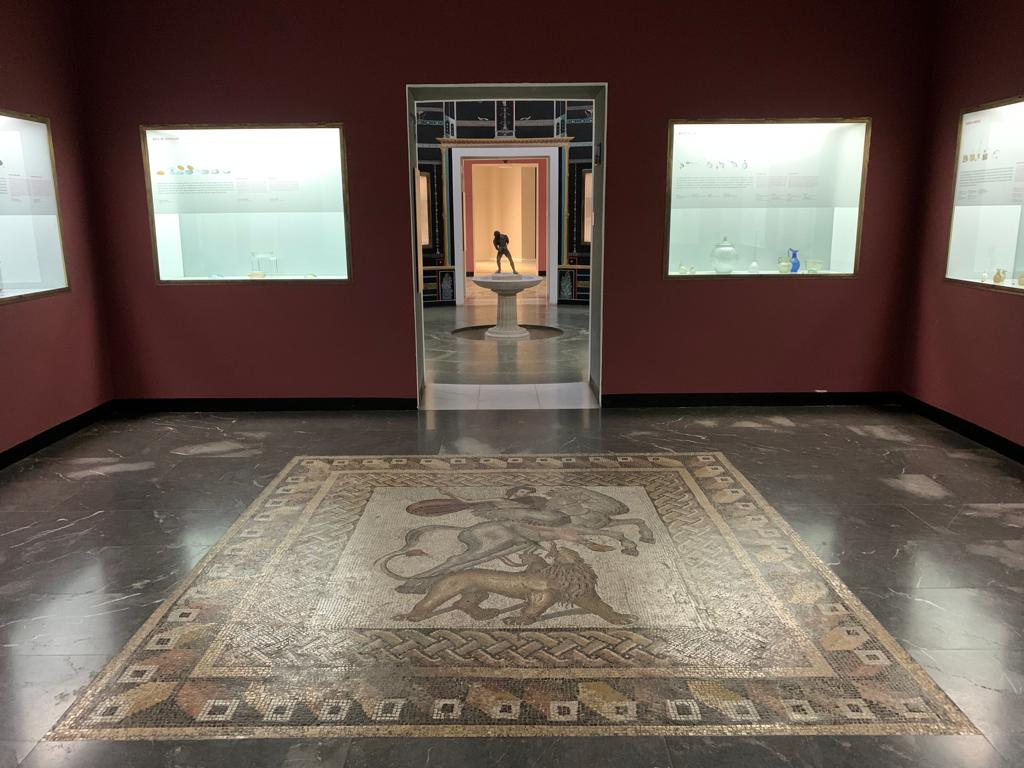

Final Thoughts on the Archaeology Museum of Catalonia
When I reviewed the Museu Nacional d’Art de Catalunya, I recommended it for visitors to Barcelona as a way of getting to grips with the region’s art history. I would be a little more cautious with the Museu d’Arqueologia de Catalunya. My recommendation is that it’s best for archaeology and history lovers. I say this partly because the art museum comes with a grander building and spectacular views so is likely to impress even casual visitors. But it’s also that there are so many museums and sights to see in Montjuïc and Barcelona that you’re spoiled for choice.
I, however, am one of those archaeology and history lovers. And I enjoyed it. The museum achieves its mission of telling the story of Catalonia’s archaeological heritage. There are a few fun flourishes along the way. And – ultimate history nerdery – I enjoyed seeing another converted building from the 1929 Universal Exposition.
What I took from the Archaeology Museum of Catalonia is how a museum can start small in engaging with visitors in new ways. You can be a museum with traditional displays and dioramas, but still incorporate new technologies into your visitor experience. This requires much less funding than a major transformation, so is much more achievable. A good way to stay museologically engaged and up to date.
Salterton Arts Review’s rating: 3.5/5
If you see this after your page is loaded completely, leafletJS files are missing.

